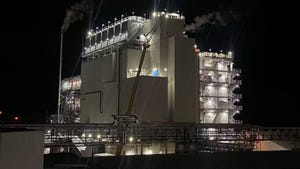How advanced plastics saved lives on Asiana Flight 214
Flight attendants and first responders are receiving very well deserved praise for their fast and brave work to rapidly evacuate passengers from Asiana Flight 214 at San Francisco International Airport on Saturday.
July 9, 2013
It's possible that investigators will want to add praise in another area as well -- the regulators and engineers who have transformed aircraft interiors from flaming and smoky tinderboxes to cabins that are much slower-burning and significantly less toxic.
The result in the case of the Asiana Boeing 777 was enough time to evacuate all of the passengers.
Swissair crash
One of the incidents that accelerated change was the 1998 crash of Swissair Flight 111 southwest of Halifax International Airport at the entrance to St. Margarets Bay, Nova Scotia. All 229 people on board died. Problems for the flight began with a small, smoldering fire that started in an air conditioning system in the cockpit. Electrical systems were affected and it was believed that smoke may have asphyxiated members of the crew.
Investigators determined that inexpensive metallized polyester film used in thermal acoustic insulation blanket cover film was a factor. As a result, there was a shift to high-performance films made from DuPont's Tedlar polyvinyl fluoride (PVF) and Victrex polyetheretherketone (PEEK), a semicrystalline thermoplastic with excellent mechanical and chemical resistance properties that are maintained at high temperatures.
The purpose of cover film is to resist the spread of fires in thermal acoustic insulation blankets, which are typically installed behind airplane interior panels to protect passengers, cargo and equipment from environmental conditions and engine noise.
More recently, Chase-Facile's Insulfab 4000 thermal acoustic insulation blanket made with a new fluropolymer lamination has been qualified to meet Boeing BMS 8-377 for both Class 00 and Class 1, Types I and II. It consists of a lamination of film made from Halar ECTFE (a 1:1 alternating copolymer of ethylene and chlorotrifluoroethylene), nylon fabric and a proprietary adhesive. It can be used as a drop-in replacement for Tedlar cover film. The Halar is processed by Ajedium Films, a unit of Solvay Specialty Polymers.
Significant efforts to improve the fire safety of aircraft predated the Swissair crash. The U.S. Aviation Safety Research Act was enacted in 1988 with the goal of developing a fireproof aircraft cabin.
Reduce fatalities by two-thirds
The specific goal of the Federal Aviation Administration's (FAA) National Aviation Research Plan has been to reduce the number of aviation fatalities and injuries by the year 2015 by two-thirds because 40% of fatalities in impact-survivable aircraft accidents were due to fire and smoke.
The National Research Council (NRC) said upfront that a fireproof cabin would need to be constructed of ultra-fire-resistant materials having 10 times lower heat release rate (HRR) than current materials. Research focused on thermoplastics for thermoformed parts, thermosetting polymers for liners and composite panels, rubber for seat cushions, and fiber-forming polymers for textiles
Materials used in aircraft that carry more than 19 passengers were subjected to the following tests:
Heat release (HR) and heat release rate (HRR),
Smoke density (SM),
Ignition resistance (IR) when subjected to a Bunsen burner flame for an amount of time and at an angle of inclination that depends on the application,
Fire resistance (FR) ability to resist penetration by an oil burner flame,
Burning rate (BR) as measured by mass loss after exposure to an oil burner for a specified period of time, and
Flame spread (FS) under radiant heating.
Materials such as wool and leather that had been used in seats were replaced with fire-resistant, nonhalogenated plastics. Metalized polyester films were replaced with more fire-resistant materials.
Two companies the FAA acknowledged for their help in the fire safety research on nonhalogenated plastics were Solvay Advanced Polymers (now Solvay Specialty Polymers) and GE Plastics (now SABIC Innovative Plastics). The Polymer Science & Engineering Department at the University of Massachusetts, Amherst, also played a role.
One of the products developed by SABIC was foam made with Ultem polyetherimide resin that has what SABIC describes as best-in-class flame, smoke, toxicity (FST) performance. It also is 10 - 20 times lighter than traditional plastic components. The composite foam is used in luggage bins, galleys and lower wall panels.
It would appear from the number of survivors of the Asiana crash at San Francisco Airport that more than 20 years of hard work to improve aircraft interior fire ratings has paid off.
Combustible Materials in Wide-Body Aircraft
Weight, kg | Component | Weight, kg | |
Seats | 1500 | Linings | 500 |
Acoustic insulation | 400 | Electrical insulation | 200 |
Decorative panels | 1600 | Windows | 500 |
Textiles | 900 | Small parts and rubber | 500 |
Air ducts | 500 | Safety equipment | 1000 |
Source: FAA
You May Also Like


